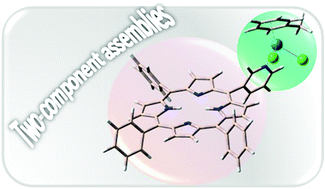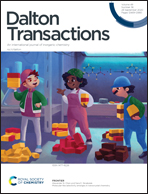Theoretical exploration of the photophysical properties of two-component RuII–porphyrin dyes as promising assemblies for a combined antitumor effect†
Abstract
Due to the extraordinary success of porphyrins in photodynamic therapy (PDT) and Ru compounds as chemotherapeutics, a series of RuII–porphyrin complexes have recently been synthesized and proposed as promising dual-action therapeutic agents. The results of a careful DFT and TDDFT investigation on four mononuclear pyridyl triphenylporphyrin RuII–arene complexes are herein reported and compared with those obtained for the metal-free derivatives. The investigation aims at shedding light on the modulation of the photophysical properties of the light absorber upon metalation and exploring the hydrolysis process of the RuII-moiety in the presence of the bulky porphyrin unit. Type I and Type II photoreactions were analyzed computing absorption spectra, singlet–triplet energy gaps, spin orbit coupling constants and vertical electron affinity (VEA) along with ionization potentials (VIP) for all the investigated compounds, while the chloride/water exchange reaction kinetics were determined by exploring the first and second aquation reactions of the Ru-moiety. Despite the highly similar photophysical properties displayed by the members of this class of compounds, an analysis of the hydrolysis processes in the dark allows to point out an interesting difference related to the type of pyridylporphyrin isomer and could be a preliminary explanation of the greater phototoxicity experimentally found for 3′-pyridyl substituted compounds.



 Please wait while we load your content...
Please wait while we load your content...